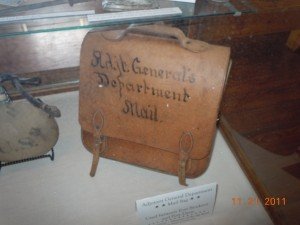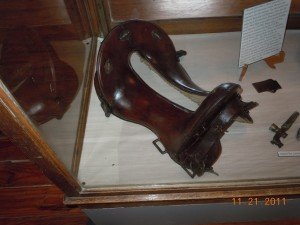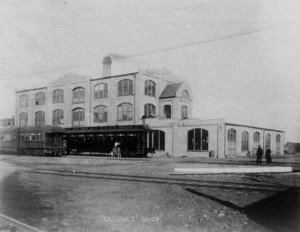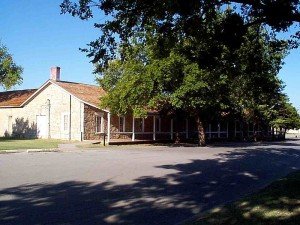The Frontier Soldier in the Old West
Many times when we consider the frontier America we see pictures of the frontier infantry soldiers and cavalry soldiers fighting the Indians of the plains. The military certainly was involved with Indian Wars for decades in the 1800’s which, as most historians believe, finally ended in 1890 at Wounded Knee. What really hasn’t had the same publicity as the Indian Wars was what the other duties the rank and file soldier was involved in, and there were many.
Thank you for reading this post, don't forget to subscribe!
A lot can be learned by visiting some of the old west forts that today are National Historical Sites. Some of the best include Fort Stockton in southwest Texas, Fort Union in northeastern New Mexico and Fort Concho in San Angelo Texas. These are just a few, but they are fascinating to visit. Everyone of these former frontier forts feature great artifacts of the old west military days and you can really get a good feel for what the duties and everyday life was for a soldier in frontier America.
When settlers moved west in earnest, and alot of this was during the time of the California Gold Rush, two army forts were critical in aiding overland travelers. Those were forts on the Platte Road, Kearney in Nebraska and Laramie in Wyoming. Kearney stood as the first well provisioned fort after the journeys were begun, mostly from towns in western Missouri. Laramie stood further west at the junction of the Bozeman Trail which ran northwest to Montana. To be sure, both forts were established to provide a degree of security for the emigrants and that meant to protect them against Indian raids. Many cavalry soldier battles were fought in the Powder River region of Montana and further south into Wyoming. The most well known being the Battle of the Little Bighorn and the Fetterman Massacre. Those were two which seemed to receive the most publicity. The Little Bighorn Battle probably the most. There were many others that occurred from Arizona to Montana to Idaho.

Aside from engaging Indians, what some may not realize was that the frontier America soldier also was a common laborer, helping to construct forts and keeping the trails open physically. That meant moving stones and boulders and cutting down trees. It also meant constructing bridges and repairing trails after floods. This was all in addition to protecting settlers.
Settling Civilian Disputes
Although it could get complicated and not relished by the military brass, the frontier soldier became involved in civilian matters on the trail. One example was an officer serving as judge during a dispute on the Platte Road between two groups of emigrants. The group wanted to split up but couldn’t agree whose property and provisions were who’s. The cavalry officer made the decision and the groups traveled on. Both Kearney and Laramie were well provisioned to sell supplies to the travelers but there were times when the soldiers had to find supplies in emergencies when people found themselves stranded without food. It’s thought that a good many of the settlers provided poorly for a 2,000 mile journey in a lot of cases. Many purchased mules that weren’t fit for the trip. In general, many left on the journey ill equipped. A lot of things can go wrong on a long journey through an unforgiving land.

Both forts, Kearney and Laramie provided medical care. In many cases for serious conditions such as gunshot wounds, broken legs and contagious diseases. The forts and it’s cavalry soldiers obviously provided a sort of oasis in an otherwise desolate and dangerous land. These forts and all frontier forts actually served a dual purpose. One charge was to try and protect the settlers and at the same time help facilitate their westward advance.The government wanted people to settle the west.
The Soldier as a Lawman
The cavalry soldier also became a quasi lawman when the military was called upon by the locals to hunt down outlaws. The new small settlements typically had inadequate law enforcement short of vigilante groups. Mostly the army became involved if there was a high profile crime such as a train robbery. The train carried U.S. mail and from that a case could be made for legal military involvement.
Soldiers Involvement in Labor Strikes
The soldier being used as a strikebreaker was probably the most controversial use of troops. In the late 1800’s there were several labor disputes at western mining camps. Many times violence and bloodshed ensued and when either the local militia or the private detective agencies hired by the mine owners couldn’t restore order, the President was asked to send in the military Serving in this manner however was a no win situation. Either side would accuse the army of being at service to the other, usually the army being accused of aiding the mine owners.
Probably the biggest involvement of U.S. Army troops in a labor strike was the one involving the Pullman Company in Chicago, manufacturer of the famous Pullman Rail Car. Pullman had essentially a company town outside Chicago where workers lived and worked. The town was owned by the company. The strike occurred in the summer of 1994 during a time of national economic depression. Eventually the strike spread across the U.S. and virtually shut down the railroads as other workers sided with the strikers. Violenec Nelson ensued and President Cleveland called in the army with about 12,000 troops under the command of the famous frontier cavalry soldier, General Nelson Miles. Miles made a name for himself during the Indian Wars of the prior decades.

This was a delicate situation because of the Posse Comitatus Act which restricted civilian involvement by the military. What’s ironic about this situation is that the rank and file army soldier probably had much more in common with the striker. Many of the frontier soldiers were immigrants just as many of the strikers were. Intervening in labor disputes was probably the army’s most trying of assignments both tactically and legally.
While the Indian engagements were certainly a big part of what the U,.S. Army was involved in, it should be noted that there was much more a soldier had to contend with.
Three additional articles and photos on Trips Into History you’ll find interesting are the Surrender of Crazy Horse and how it all came about…the Mountain Howitzer, one of the most powerful cavalry weapons on the western plains and The Resting Place of the Alamo Defenders.
Some of the best old west forts that today have large exhibits of the old west and how it related to the frontier American soldier include...Fort Sill in Oklahoma which is still a busy military base.

Fort Sill has the best collection of military weaponry found anywhere. Fort Stockton in southwest Texas has great exhibits including stone buildings that include a realistic showcase of a frontier army barrack. Fort Concho in San Angelo Texas was a large frontier fort where today you can see many of the medical supplies and instruments used during the 1800’s. Fort Union in northeast New Mexico happened to be built where two routes of the old Santa Fe Trail intersected. The fort buildings are now adobe ruins which are a popular attraction on a walking tour. Fort Union also displays authentic wagon ruts from the Santa Fe Trail days. Another good one is the old Fort Union on the Missouri River at the North Dakota / Montana border. This fort was originally a trading post for the American Fur Company.
Pullman Company and Fort Sill photos are in the public domain. Remainder of photos from author’s private collection)
